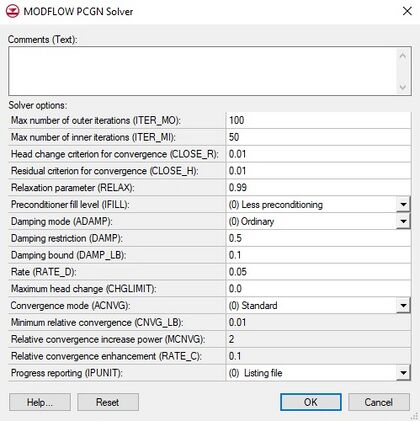GMS:PCGN Package: Difference between revisions
From XMS Wiki
Jump to navigationJump to search
No edit summary |
No edit summary |
||
| Line 16: | Line 16: | ||
** (1) Adaptive – Changes the damping parameter θ in response to the difficulty the nonlinear solver encounters in solving a given problem. | ** (1) Adaptive – Changes the damping parameter θ in response to the difficulty the nonlinear solver encounters in solving a given problem. | ||
** (2) Enhanced – The value of θ is increased (but never decreased) provided the Picard iteration is proceeding satisfactorily. | ** (2) Enhanced – The value of θ is increased (but never decreased) provided the Picard iteration is proceeding satisfactorily. | ||
* Damping restriction (DAMP) | * ''Damping restriction (DAMP)'' – Restricts the damping parameter θ. Generally is set to be between 0 and 1. | ||
* Damping bound (DAMP_LB) | * Damping bound (DAMP_LB) | ||
* Rate (RATE_D) | * Rate (RATE_D) | ||
